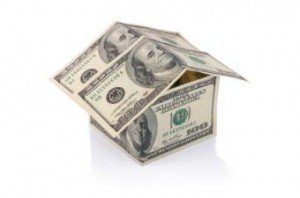
The nation’s most popular LGBT neighborhoods cost nearly 40 percent more than the rest of the country, according to a recent analysis from Trulia and OkCupid. The discrepancy has jumped more than eight percentage points since 2012.
According to the analysis, the country’s top neighborhoods for LGBT residents are West Hollywood, California; Castro in San Francisco; Uptown Dallas, Texas; Palm Springs, California; Hillcrest in San Diego, California; Edgewater and Andersonville in Chicago; Jamaica Plain in Boston; Capitol Hill/Madison Park/Montlake in Seattle; and Treme/French Quarter in New Orleans. LGBT couples make up 48 percent of all households in West Hollywood.
“Many of these neighborhoods can be found on the West Coast,” Trulia reported. “Another thing that became increasingly apparent? These neighborhoods are not cheap. In 2012, at the bottom of the housing market, it cost about 29 percent more per square foot to live in one of these gay-friendly zip codes than elsewhere. Today, that premium is even higher with home values rising to 37 percent more per square foot.”
Though West Hollywood came in as the most popular LGBT neighborhood, it certainly wasn’t the priciest. That honor belonged to New York City.
“The relative cost of housing in gay neighborhoods has increased more drastically in some cities than others,” Trulia reported. “We noticed the biggest change in New York, where living in a gay neighborhood went from pricey—106 percent more than other neighborhoods on average—to really, really pricey—162 percent more. Today, New York City residential property costs on average $567 per square foot. But in a gay neighborhood in NYC, it climbs to $659 a square foot.”
New York City’s most popular LGBT neighborhoods include Chelsea/Greenwich, where LGBT residents make up 28.4 percent of singles and 16.5 percent of singles; Midtown/Hell’s Kitchen (27.9 percent, 15.6 percent); and Hamilton Heights (28.6 percent, 14.9 percent).
New Orleans came in at No. 2 in terms of price jumps. LGBT neighborhoods in the Big Easy are 151 percent more expensive than other zip codes—a rise of 52 percentage points since 2012. Boston; Louisville, Kentucky; and Charlotte, North Carolina, rounded out the top five in terms of price increases.
About a third of all LGBT neighborhoods analyzed have actually become more affordable over the past few years.
“Five years ago in Miami, for example, it cost about 73 percent more to live in these areas than elsewhere, but today, these neighborhoods cost only 60 percent more,” Trulia reported. “We still wouldn’t call that a bargain, but at least it’s a shift in the right direction—at least from the perspective of potential residents. In San Francisco, San Diego, and Sacramento, California, we see similar trends: gay neighborhoods are more expensive than everywhere else but relatively less expensive than they were in 2012.”

 theMReport.com Your trusted source for mortgage banking news
theMReport.com Your trusted source for mortgage banking news








